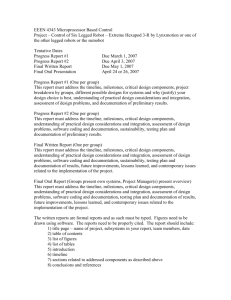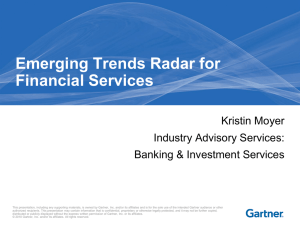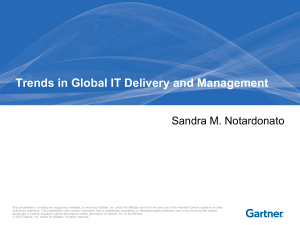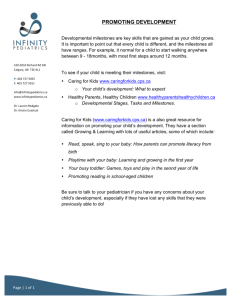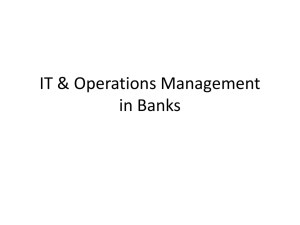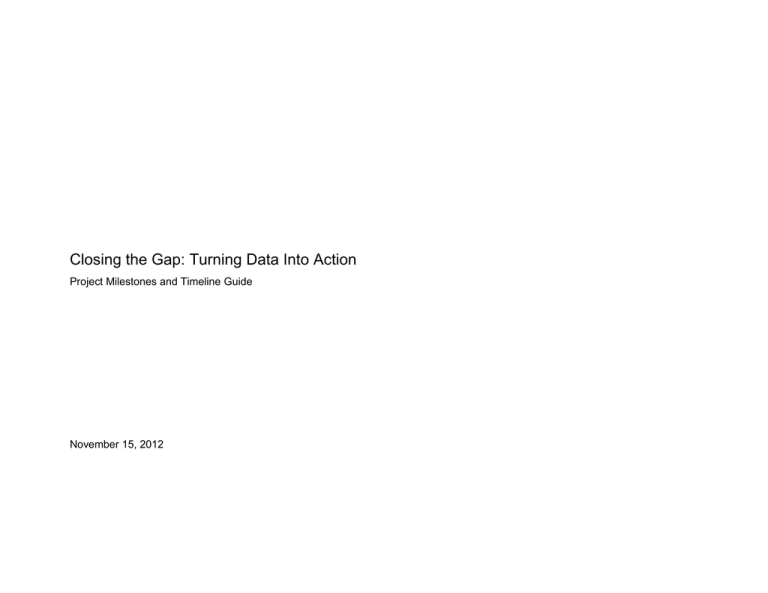
Closing the Gap: Turning Data Into Action
Project Milestones and Timeline Guide
November 15, 2012
Project Milestones and Timeline Guide
15 November 2012—Page 2
Table of Contents
Introduction ................................................................................................................... 3
Purpose .......................................................................................................................... 3
Structure ........................................................................................................................ 3
How to Use This Guide ................................................................................................. 4
1.0
2.0
Project Initiation .............................................................................................................. 5
Project Planning.............................................................................................................. 5
3.0
Project Execution............................................................................................................ 6
4.0
Project Monitoring and Control ..................................................................................... 7
5.0
Project Closeout and Support........................................................................................ 8
© 2012 Gartner, Inc. and/or its affiliates. All rights reserved.
Gartner is a trademark of Gartner, Inc. or its affiliates.
For internal use of Gartner only.
Project Milestones and Timeline Guide
15 November 2012—Page 3
Introduction
District and school leaders are striving to make classroom-level student data available in forms that are more readily usable for
improving instructional practices. These demands require that districts procure and effectively deploy data systems such as student
information systems (SIS), learning management systems (LMS) and assessment systems.
The Bill & Melinda Gates Foundation has provided funding for a project entitled Closing the Gap: Turning SIS/LMS Data into Action.
Some of the objectives of this project were to uncover current attitudes toward the value of existing SIS and LMS solutions,
understand the processes and approaches used to select and implement these solutions, and identify recommendations and best
practices for not only selecting and implementing solutions, but transitioning districts to a more data-rich culture.
As part of this project, Gartner, Inc. collaborated with American Association of School Administrators (AASA) and the Consortium for
School Networking (CoSN) to identify lessons learned by districts across the U.S. in identifying, selecting, and implementing SIS and
LMS solutions. Many districts reflected that taking the time to plan before executing project tasks is well worth the time spent
planning. In many cases, districts cited this as a critical success factor for a project.
This plan template and other resources to support an SIS and or LMS implantation and transitioning K-12 school districts toward a
more data-rich culture can be found on the Resources tab at www.turningdataintoaction.org.
Purpose
The purpose of this document is to provide districts with an outline for key project milestones for selection and/or implementation of a
SIS/LMS solution and the phase of the project in which they should occur (tools and guides on developing some of the key
milestones listed in this document can be found at www.turningdataintoaction.org). Districts using this guide should understand that
professional and experienced program and project management is typically needed to successfully implement such solutions in their
respective organizations. This document is not intended to replace such expertise, but instead, is intended to help the districts create
a high level timeline that will be realistic for their efforts.
It is important to note that because every district is different, the amount of time and level of effort to complete these types of project
will vary. As a result, there is not specific guidance that can be given with respect to resources, time, and level of effort. However,
Gartner best practices suggest that large scale efforts greatly benefit from structured project planning and oversight.
Structure
For the purpose of this document, there are five key phases of a project: Initiation, Planning, Execution, Monitoring and Control, and
Closeout and Support. For each project phase, key milestones and checkpoints are listed.
© 2012 Gartner, Inc. and/or its affiliates. All rights reserved.
Gartner is a trademark of Gartner, Inc. or its affiliates.
For internal use of Gartner only.
Project Milestones and Timeline Guide
15 November 2012—Page 4
Figure 1: Project Phases and Milestones
How to Use This Guide
This guide can be used in the following ways:
Serve as a checklist for the minimal components that should be included in the project schedule and inform content for more
detailed project plans and schedules
Serve as an input to the project cost estimate (i.e. think through the personnel, training/professional development, software,
and hardware implications/costs associated with each phase of the project)
© 2012 Gartner, Inc. and/or its affiliates. All rights reserved.
Gartner is a trademark of Gartner, Inc. or its affiliates.
For internal use of Gartner only.
Project Milestones and Timeline Guide
15 November 2012—Page 5
Key Terms
1.0
Project Initiation
The Project Initiation Phase includes tasks associated with defining the project’s goals
and outcomes and securing necessary funding. The purpose of this step is to document
the project’s goals and expected outcomes in a manner that helps secure necessary
funding.
Milestones:
Approved rationale, goals, objectives and guiding principles
o The Goals Workshop Template, another assistance template, can be used
to help facilitate the discussions needed to identify the projects goals,
objectives, and guiding principles.
Approved summary level cost estimation
o The Implementation Cost Planning Guide and associated template can be
used to help think through the major cost items associated with your
district’s implementation.
Secured project sponsor
Accomplishments and upcoming milestones communicated to district leadership
Corrective Actions: steps taken to
address any outputs that do not
meet predefined expectations
Project Guiding Principles:
statements that describe how a
project will be governed
Project Sponsor: person or group
providing the funding for the project
Project Steering Committee: group
of people who will make strategic
decisions for the project
Quality Assurance Plan: describes
how the project’s outputs will be
verified and measured for success
Deliverables:
Project Charter
Accountable Resource(s):
2.0
District Superintendent
Project Sponsor
Project Planning
The Project Planning Phase includes tasks associated with defining the approach to completing project milestones and assigning the
necessary financial, human, and physical resources to successfully complete the project. The purpose of this step is to document
project tasks and needs in a manner the helps identify and mitigate risks.
Milestones:
© 2012 Gartner, Inc. and/or its affiliates. All rights reserved.
Gartner is a trademark of Gartner, Inc. or its affiliates.
For internal use of Gartner only.
Project Milestones and Timeline Guide
15 November 2012—Page 6
Defined project team with assigned resources
o Districts can use the Project Roles and Responsibilities Matrix as a starting point to identify the key roles and
responsibilities needed to execute this project.
Established project steering committee with assigned resources
Baseline project plan and schedule
o The completed project charter, coupled with the information in this guide can help districts develop initial drafts of
more detailed project plans and schedules.
Past accomplishments and upcoming milestones communicated to stakeholders
Deliverables:
Detailed project plan and schedule
Accountable Resource(s):
3.0
District Superintendent
District Technology Leader
Technical Project Manager
Project Execution
The Project Execution Phase includes tasks associated with developing and executing project artifacts and tasks in a manner that
ensures high quality outputs are produced on time and on schedule. Key milestones will vary significantly from district to district.
When establishing the milestones for this phase of the project, consider the following:
What are the major steps in acquiring and customizing an off-the-shelf product (e.g. focus groups with
educators/stakeholders that are scheduled to utilize the product, define project requirements, select solution, clean and
transfer data, update policies and processes, deliver training and professional development, etc.)?
With which key dates and initiatives must project milestones align (the close of a marking period or school year, school board
meetings, parent teacher conferences, etc)?
For very large projects, these steps may be executed in major phases. In those cases, each phase would have its own
detailed plan, execution, and project monitoring activities. They would occur in an iterative manner.
Milestones:
Defined governance structure with assigned resources (includes steering committee, project team, stakeholders, etc.)
© 2012 Gartner, Inc. and/or its affiliates. All rights reserved.
Gartner is a trademark of Gartner, Inc. or its affiliates.
For internal use of Gartner only.
Project Milestones and Timeline Guide
15 November 2012—Page 7
Defined project steering committee with assigned staff
Detailed functional and technical requirements
Technical application selected
Configured application with clean data
Updated educational policies, processes and procedures
Completed system training and professional development
o The Guide to Professional Development and Training assistance template can help districts define a robust training
plan.
Past accomplishments and upcoming milestones communicated to stakeholders
Deliverables:
System Requirements
Documented Processes and Procedures
Training Plan
Accountable Resource(s):
4.0
District Superintendent
District Technology Leader
Educational Project Manager
Technical Project Manager
Project Monitoring and Control
The Project Monitoring and Control Phase includes tasks associated with ensuring the quality of tasks completed as part of the
Project Execution phase. The purpose of this phase is to ensure that the project not only meets defined requirements and
expectations, but also addresses the underlying educational need for which the project was initiated.
Milestones:
Documented issues, risks, and lessons learned for each project phase
Defined project metrics (e.g. benefits achieved, data cleansing/conversion accuracy)
© 2012 Gartner, Inc. and/or its affiliates. All rights reserved.
Gartner is a trademark of Gartner, Inc. or its affiliates.
For internal use of Gartner only.
Project Milestones and Timeline Guide
15 November 2012—Page 8
Quality Assurance Plan1 (See Key Terms sidebar for definition)
Completed Corrective Actions (e.g. correct project delays by identifying tasks that can be performed simultaneously or
improve data quality by adding a review cycle prior to migrating data into the production environment)
Past accomplishments and upcoming milestones communicated to stakeholders
Deliverables:
Quality Assurance Plan
Accountable Resource(s):
5.0
District Superintendent
District Technology Leader
Educational Project Manager
Technical Project Manager
Project Closeout and Support
The Project Closeout and Support Phase includes tasks associated with verifying the accomplishment of project objectives,
completing any relevant knowledge sharing, and training and supporting staff after initial roll-out. The purpose of this phase is to
ensure that district has the appropriate support mechanisms in place for the solution to be successful in the long term.
Milestones:
Sign Off or approval of all project outputs and outcomes
Populated Repository of Completed Project Documentation
Staff Professional Development/Training
Past accomplishments and upcoming milestones communicated to stakeholders
Deliverables:
Completed System Implementation
Accountable Resource(s):
1
Quality Assurance Plan (QAP): The QAP will be dependent upon the goals and intended outcomes defined for the effort and therefore will vary
for each implementation. However, in general, it should describe the process being used to track, monitor, and resolve project issues and risks.
© 2012 Gartner, Inc. and/or its affiliates. All rights reserved.
Gartner is a trademark of Gartner, Inc. or its affiliates.
For internal use of Gartner only.
Project Milestones and Timeline Guide
15 November 2012—Page 9
District Superintendent
© 2012 Gartner, Inc. and/or its affiliates. All rights reserved.
Gartner is a trademark of Gartner, Inc. or its affiliates.
For internal use of Gartner only.


